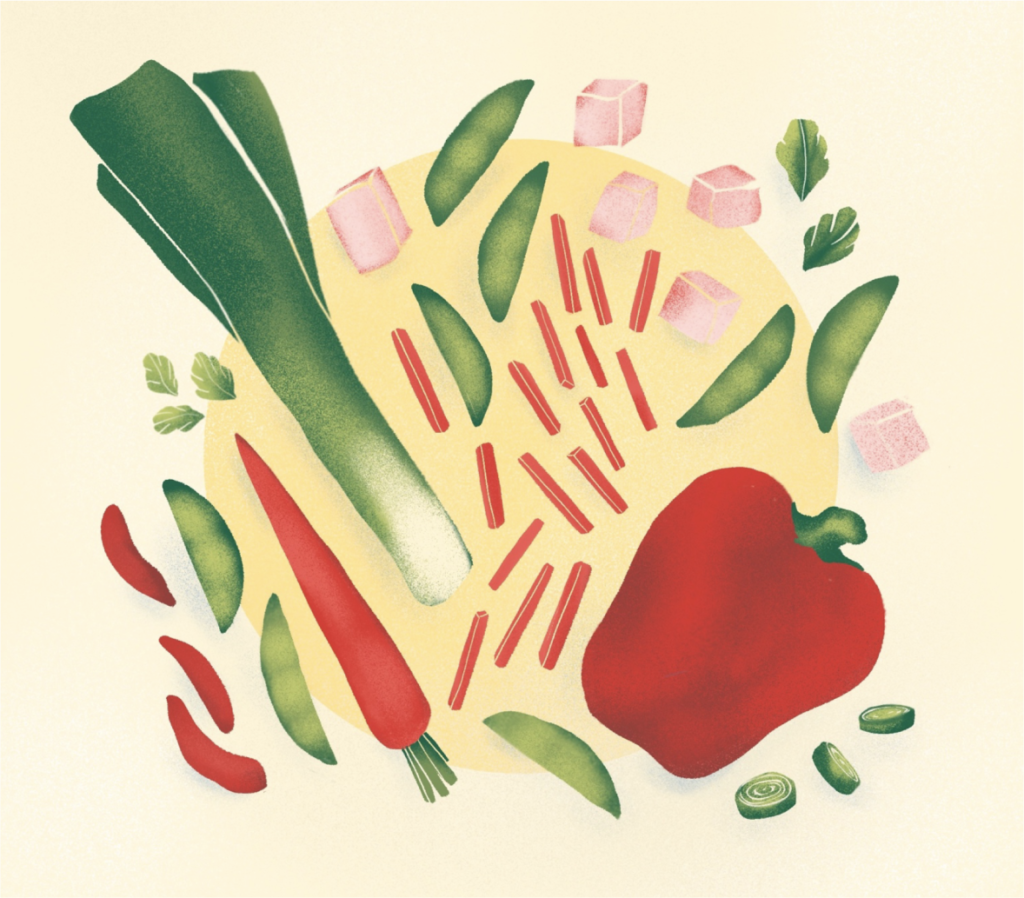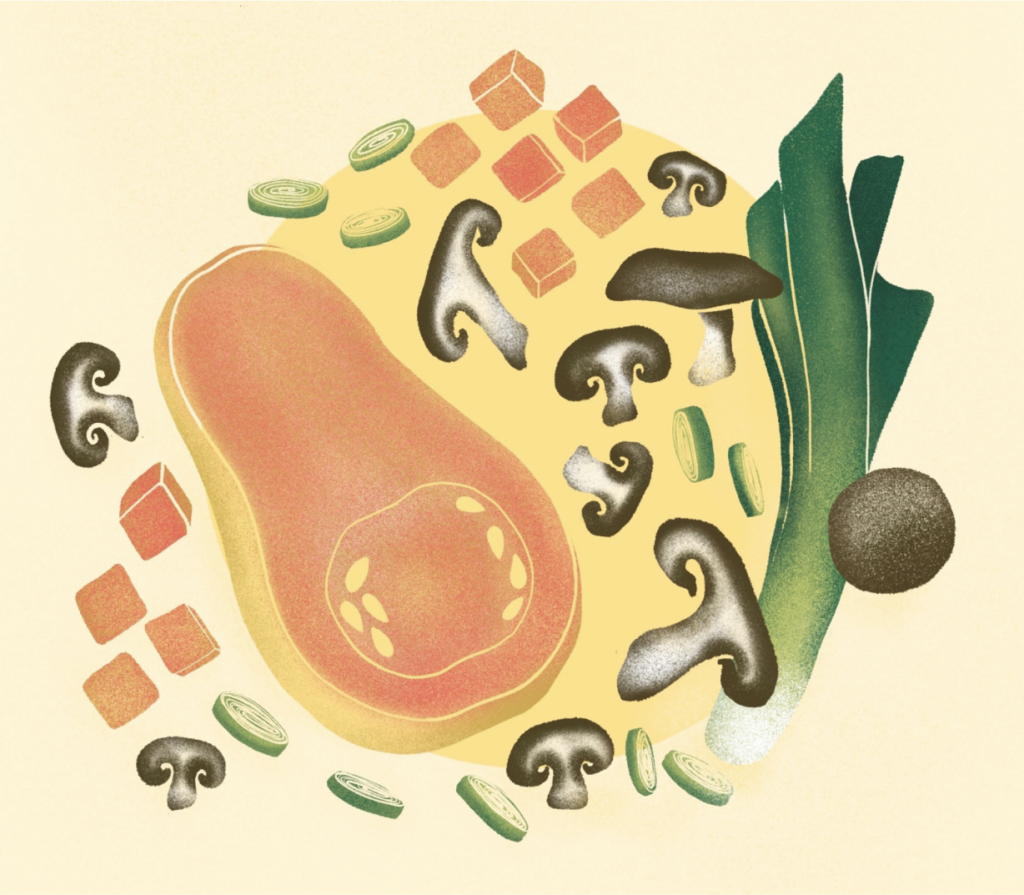What’s for dinner? After a long day working behind a screen, figuring out dinner feels overwhelming. Somewhere between lists of pricey ingredients, pop-up video ads for things I don’t need, and thinking about ordering take-out again and bruising my wallet, I admit defeat. I’m completely over this dinner problem.
I spend my working hours immersing myself in customer problems and designing solutions behind a computer screen. I love watching customers’ eyes light up when I’m able to unlock a solution. Now it’s my turn to be the customer with a problem. At the end of a long work day, I’m completely screen-fried and hungry. I close my design apps, but my design brain comes with me into the evening to solve dinner.

The design process
In its simplest form, what does the design process look like? Empathizing with the customer, zeroing in on the most painful problem, and imagining an ideal state. Then I add the constraints of reality, go broad and go narrow with solutions, and experiment and test.
In this case, empathizing was easy since I was dealing with my own mind-numbing frustration with the “dinner problem” and feeling more than a little bit “h-angry.” It was also easy to start with the end in mind (the ideal state): tonight, I’m craving sushi. My principles are always the same: I want something delicious, nourishing, and affordable.
The constraints are the usual: my tired end-of-day energy, my minimalist pantry, and my constant hatred of cleaning dishes. Cooking won’t happen unless those constraints are respected.

Building to think — bridging the gap between problem and solution
The design emerges from designing, or “building.” So I start to build. I pull out a bowl, open the fridge, scour the pantry, put my options on the counter, and start hacking away. What’s essential to create a delicious sushi-like experience? What can I cut? I start narrowing down a little “move forward” pile and honing in on a solution.
Cooking the ingredients is the next step in the process. Out of the ambiguous miscellaneous parts and pieces, my dinner solution slowly takes shape. Rice is an easy start. As for vegetables (remember, healthy is one of the constraints here), I’ve seen cute julienned carrots, thinly sliced red cabbage, and cucumbers in sushi, so I’ll start there. Which reminds me, avocado is essential, so let’s count that in. Crunchy? Toasted nuts or seeds will do just fine. As for the seaweed, I have one of those snack packs of seaweed.
I declare raw fish officially out of scope for tonight’s dinner solution. Mastering the art of safely preparing and consuming uncooked fish is a weekend project, but not all is lost. A meaty umami flavor is going to happen. Thank you, pan-fried mushrooms.
Intuition says the secret is the sauce, but I need some inspiration here, so I Google it. Shielding my eyes from the face slap of video ads, I grab three sushi sauce recipes. They all call for soy sauce and sesame oil. Done. I whisk a few tablespoons of each together and taste it. I like it spicier. Add Sriracha. Still could use more flavor. This recipe calls for lime juice. Squeeze. Perfect.

Presenting a solution
The time has come to stop experimenting and move forward with a singular solution. Into the bowl, I layer rice, mushrooms, thinly sliced vegetables, avocado, my sushi sauce, and garnish with toasted sesame seeds.
I’m satisfied, but like any designer, I quickly turn to critiquing and start a mental list of iterations. I love the rainbow colors of the vegetables, but they feel too constrained on one side of the color spectrum. What’s something green that would work here? A cilantro garnish would make this bowl visually glow. I’ll make these updates next time.

If you can design you can cook
Design. Test. Iterate. Refine. Rinse. Repeat. The same curiosity, bold experimentation, intuition, and lessons from failure that guide my design process also whip my cooking skills into shape. The design process becomes manual as I chop ingredients, taste experiments, and make decisions. I’ve built muscle memory for creating solutions to ambiguous, sometimes overwhelming problems from years of prototyping, feedback loops, iterations, and refinements.
Not only does cooking mimic product design, cooking connects me to the fundamentals of designing tangible solutions for real people. In the software product world, solutions can often lose touch with a real problem of a real person that requires a clear solution. The voice of the customer, and the visceral problem at stake is lost in the temptation to add new features, make it “cool”, or compete with the competition.
Not so in cooking. Dinner can’t be solved with a million cool toppings or a nice sounding strategy. The solving happens while building and pushing forward through ambiguity, all fueled by a real customer with a real problem — a hungry human at the end of a long work day.
Want more dinner inspiration? Check out B.Free Creative on Substack for Besty’s vibrant plant-based recipes and illustrations.












